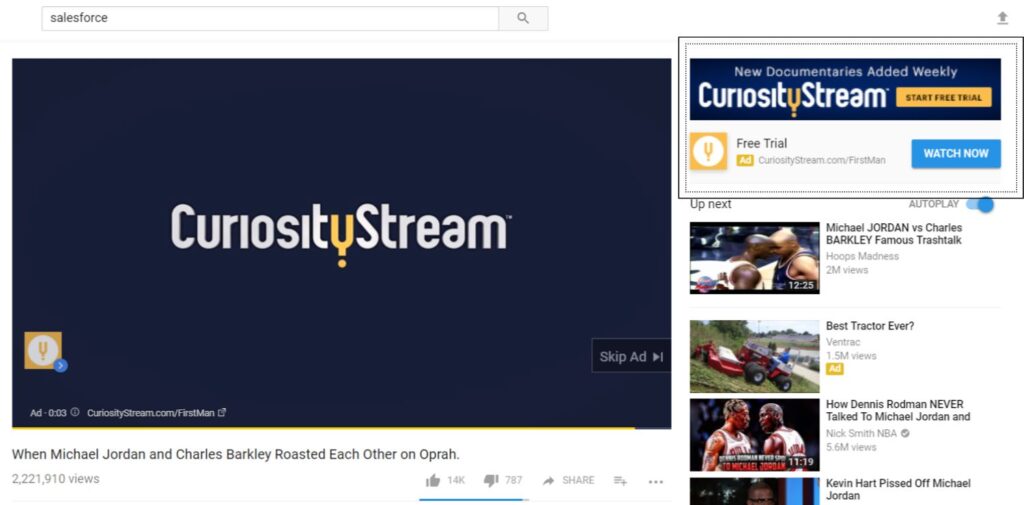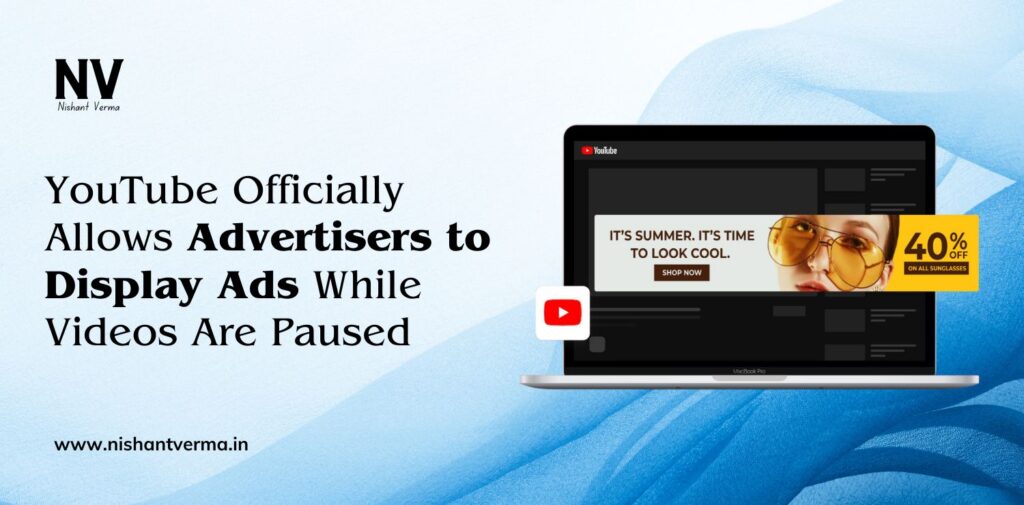YouTube has recently announced a significant change in its advertising strategy: advertisers can now display ads even when users pause videos. This development has sparked various discussions among content creators, advertisers, and viewers alike. In this article, we’ll explore what this means for each party involved, the potential benefits and drawbacks, and how it may shape the future of video consumption on the platform.
What Does This Change Mean?
Previously, ads were typically shown before, during, or after a video. With this new feature, ads can appear when a viewer decides to pause a video. This means that advertisers have another opportunity to reach their audience, even when the video is not actively playing. For many content creators and viewers, this could change how ads are perceived and interacted with on YouTube.

For Advertisers
For advertisers, this change opens up new avenues for reaching potential customers. When users pause a video, they are often engaged and attentive, making it an ideal moment for advertising. Here are some key points on how this affects advertisers:
- Increased Visibility: Ads shown during a pause may have higher visibility because users are likely to focus on the screen. This could lead to better engagement rates for advertisers.
- Targeted Advertising: YouTube has vast amounts of data on viewer preferences and behaviors. Advertisers can leverage this data to create targeted ads that are more relevant to viewers, increasing the likelihood of conversion.
- More Revenue Opportunities: With the ability to display ads during pauses, advertisers may be willing to spend more on campaigns, potentially increasing YouTube’s overall advertising revenue.
For Content Creators
Content creators may have mixed feelings about this change. While it offers the potential for increased revenue, it could also impact viewer experience. Here are some thoughts on how creators might view this:
- Potential Revenue Boost: For creators who rely on ad revenue, this change could provide an additional income stream. More ad placements might mean more money earned, especially for popular channels with large viewership.
- Viewer Experience Concerns: Creators are often concerned about how ads affect the overall viewer experience. If ads appear too frequently, it could frustrate viewers, leading to a decrease in engagement and subscriptions.
- Content Adaptation: Creators might need to adapt their content to keep viewers engaged and minimize interruptions caused by ads. This could involve changing the pacing of their videos or creating more engaging hooks.
For Viewers
For viewers, this change can be both a blessing and a curse. While it provides another opportunity to discover new products and services, it can also lead to increased ad fatigue. Here are some points of view from the audience’s perspective:
- Discovering New Products: Ads displayed during pauses can introduce viewers to new brands and products they might not have encountered otherwise. This can be beneficial for both viewers and advertisers.
- Increased Ad Load: The downside is that viewers may feel overwhelmed by the frequency of ads. With ads now appearing during pauses, viewers may find it challenging to enjoy content without interruptions.
- Control Over Experience: Viewers have expressed concerns about how much control they have over their viewing experience. Many already dislike the number of ads shown, and this change may lead to more calls for ad-free viewing options.
The Reaction from the Community
Since the announcement, reactions from the YouTube community have been mixed. Some content creators and advertisers are excited about the possibilities, while others worry about the implications for viewer satisfaction.
Positive Reactions
- Optimism for Growth: Many advertisers see this as a fantastic opportunity to engage with audiences in a new way. They believe that ads shown during pauses could lead to higher conversion rates.
- Support from Creators: Some content creators welcome the change, hoping it will lead to increased revenue without needing to change their content drastically.
Negative Reactions
- Viewer Fatigue: Many viewers have expressed concern over ad fatigue. With the rise of ad-blocking technologies, some worry that too many ads could drive viewers away from the platform altogether.
- Concerns Over Content Quality: Some creators fear that prioritizing ad placements may lead to a decline in content quality. If creators focus more on making money through ads rather than creating engaging content, the overall quality could suffer.

The Future of Display ads on YouTube
As YouTube implements this change, it’s essential to consider the long-term implications for the platform and its community. The introduction of ads during pauses could set a precedent for how video advertising evolves in the future.
Balancing Revenue and User Experience
YouTube will need to find a balance between generating ad revenue and maintaining a positive user experience. If viewers feel overwhelmed by ads, they may seek alternative platforms, which could harm both advertisers and content creators.
Innovation in Advertising Formats
This change may inspire further innovation in how ads are presented on the platform. For instance, advertisers may develop more engaging and interactive ads that resonate better with viewers, making the ad experience more enjoyable.
Viewer Preferences
The success of this new ad format will largely depend on viewer preferences. YouTube may need to adapt its approach based on audience feedback. If viewers embrace the new ads, it could become a permanent feature; if not, YouTube may reconsider this strategy.
Conclusion
YouTube’s decision to allow advertisers to display ads while videos are paused marks a significant shift in the platform’s advertising landscape. While it presents new opportunities for advertisers and potential revenue streams for creators, it also raises concerns about viewer experience and ad fatigue. As the community navigates this change, it will be essential for YouTube to prioritize the needs and preferences of its users.
In the coming months, we will likely see how this new advertising strategy unfolds. Will it enhance engagement and revenue, or will it lead to viewer dissatisfaction? Only time will tell, but one thing is clear: the landscape of online video advertising is evolving, and all eyes are on YouTube.




